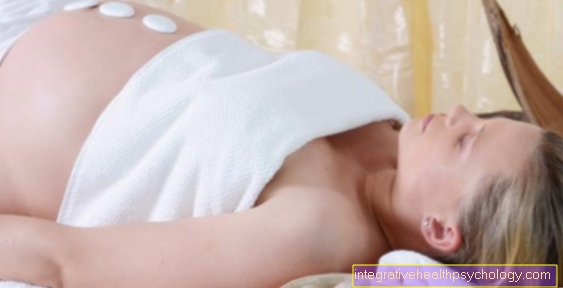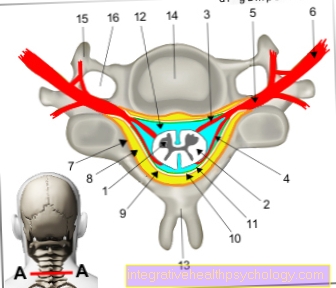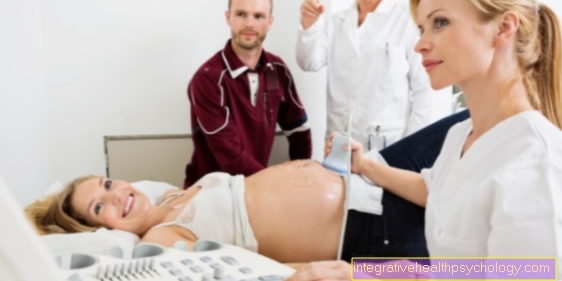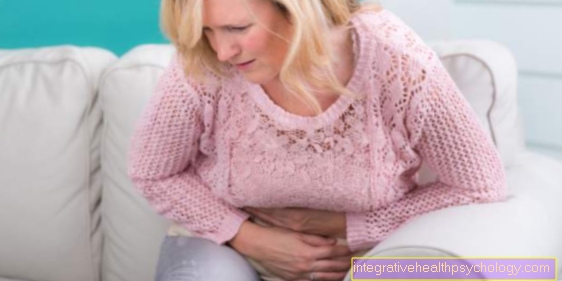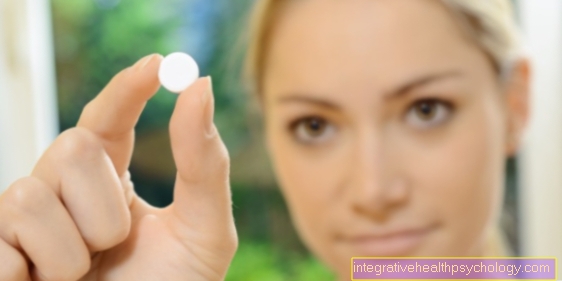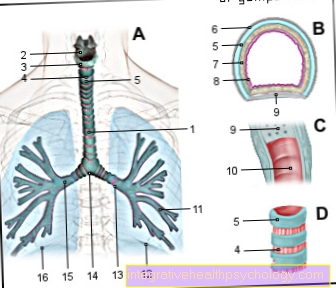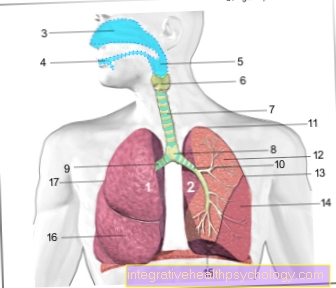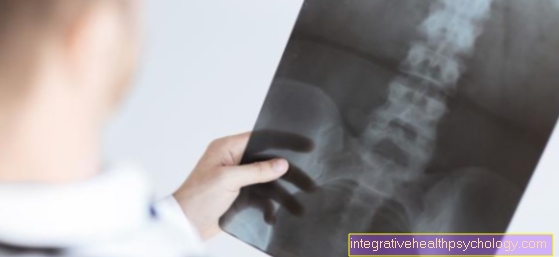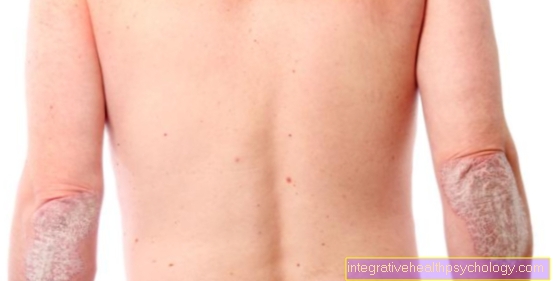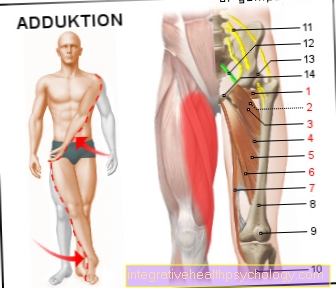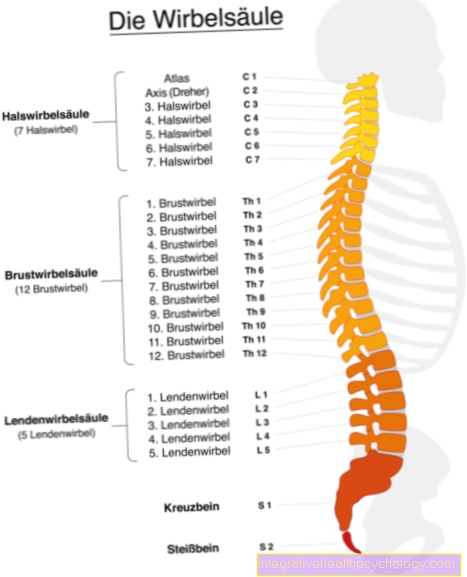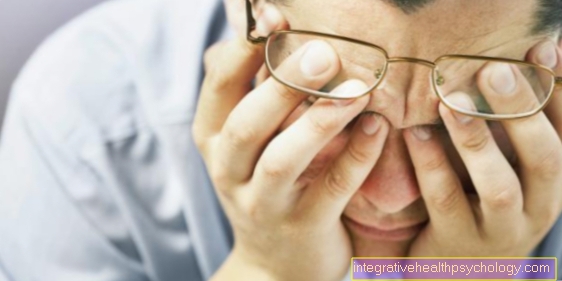The ovulation-inducing syringe
Introduction - what is the ovulation-inducing syringe?
The ovulation-triggering syringe contains the pregnancy hormone HCG (Human choriogonadotropin). If the hormone is injected, it binds to certain receptors on the ovary and triggers ovulation there after a short time. In women, the syringe is particularly used in fertility treatment and in the context of artificial insemination.
Read more on the topic: How can you trigger ovulation?
The syringe can also be used on men to test the functionality of the testicle. Since the therapy can also lead to significant side effects, the syringe should only be used under medical supervision.
Find out more about: Infertility in men

Indications for an ovulation-inducing injection
The ovulation-triggering syringe is mainly used as part of fertility treatment. First, the ovaries are stimulated so that many egg cells become as large as possible. After about 11-13 days, ovulation is initiated through the syringe and shortly before ovulation would take place, the largest follicles are punctured in order to obtain eggs for artificial insemination.
Furthermore, the ovulation-triggering syringe is used if sexual intercourse should be timed to ovulation if you want to have children. If the luteum phase is weak, there is another indication. Normally, the production of the corpus luteum hormone (progesterone) is stimulated by the hormone LH (lutenizing hormone). If this control circuit does not function optimally, the administration of HCG in the second half of the cycle can support the formation of progesterone.
You might also be interested in: How do I get pregnant?
Active ingredient and effect
The injection that induces ovulation contains the hormone HCG. Colloquially it is called the pregnancy hormone, as the cells of the placenta produce it to maintain the pregnancy. It is either a manufactured, i.e. synthetic, hormone or it can also be extracted from the urine of pregnant women.
In fertility treatment, HCG is injected in order to trigger ovulation after stimulation of the egg cells. In the normal female cycle, ovulation is triggered by the hormone LH (lutenizing hormone). In fertility treatment, however, HCG is used because it binds to the same receptor on the ovary as LH. This gives the same effect.
When does ovulation occur?
Ovulation usually occurs about 36 hours after HCG administration.
Side effects of the ovulation-inducing injection
Often headaches or local skin reactions at the injection site occur during treatment with the ovulation-inducing injection. Probably the most important side effect of the ovulation-inducing injection is overstimulation of the ovaries (OHSS, ovarian hyperstimulation syndrome). It is particularly common in women with polycystic ovarian syndrome. The stimulated follicles enlarge excessively, which can lead to discomfort in the abdominal area. In mild cases, only a feeling of fullness is perceived. If the ovaries are moderately enlarged, nausea and vomiting may occur. The stomach is bloated.
In the most severe case of this side effect, ascites (Fluid retention in the abdomen), a pleural effusion in which fluid collects between the chest wall and lungs, or a rupture, i.e. the ovary tears. This severe form in particular can also be life-threatening due to the shifting of fluid. An allergic reaction to the syringe is also possible. Symptoms may include a rash, itching, or swelling in the throat. Occasionally, a harmless rash and inflammation of the sebum glands can occur. However, a possible allergic reaction should be clarified.
interaction
Interactions with other drugs are not yet known. Nevertheless, before the treatment, a detailed consultation with a doctor should clarify which medications are being taken at the same time.
Counter-signs - When should an ovulation-inducing injection not be given?
The syringe must not be used if you are allergic to the hormone HCG. In addition, there must be no enlargements of the ovaries or cysts in the ovaries during the application. Cysts in the ovaries are not a contraindication only if they are associated with polycystic ovarian syndrome.
If unexplained bleeding from the vagina has occurred, this also counts as a contraindication. This also applies to an ectopic pregnancy less than three months ago. This treatment should not be used in women with severe phlebitis or blood clots in the leg veins. Other counter-signs are tumors in the pituitary gland, breast cancer, ovarian cancer or uterine cancer or even the assumption that one of these tumors may be present.
How much does therapy with the ovulation-inducing injection cost?
The price may vary depending on the provider. A dose costs around 25 to 40 euros. Depending on the treatment approach, there are also the costs of egg cell stimulation and the artificial insemination process, which can be in the four-digit range. Subject to certain criteria, a fixed proportion of the costs is also covered by the health insurance company.
Does the health insurance company contribute to the costs?
Health insurance companies generally only pay if a proven cause of infertility has been proven. Then every necessary measure with the exception of artificial insemination will be covered by the health insurance. If the ovulation-inducing syringe is used to optimize the cycle with normal sexual intercourse, the chances are high that this will be covered by the health insurance. Artificial insemination, in which the ovulation-triggering syringe is also used, is only covered by the health insurance to 50%. However, only for 3 cycles and the third attempt will only be reimbursed by the health insurance company if one of the first two has led to a clinical pregnancy. In addition, other criteria such as certain age limits must be complied with.
Alternatives to the ovulation-inducing injection
So far, there is no good alternative to the ovulation-inducing injection. However, the syringe is primarily only used to ensure that you know the exact time of ovulation and that you can either have targeted sexual intercourse, perform an insemination or an artificial insemination. Therefore, the ovulation-inducing injection is not a must. The time of ovulation can be estimated very well by measuring hormones in the urine even without the injection.
Find out more about the topic here: Artificial fertilization
Recommendations from our editorial team
- Unfulfilled desire to have children
- Egg donation
- Freeze eggs
- Causes of Infertility
- How do I get pregnant? - Tips
- Ovulation Bleeding - How To Know When You Are Fertile

